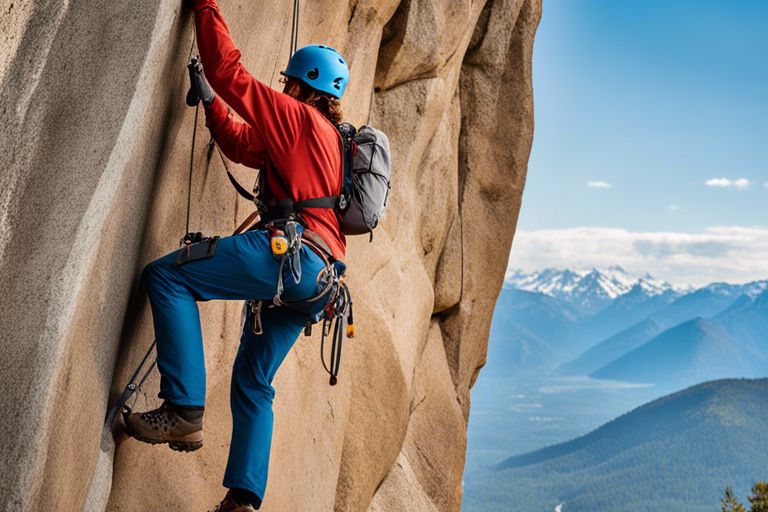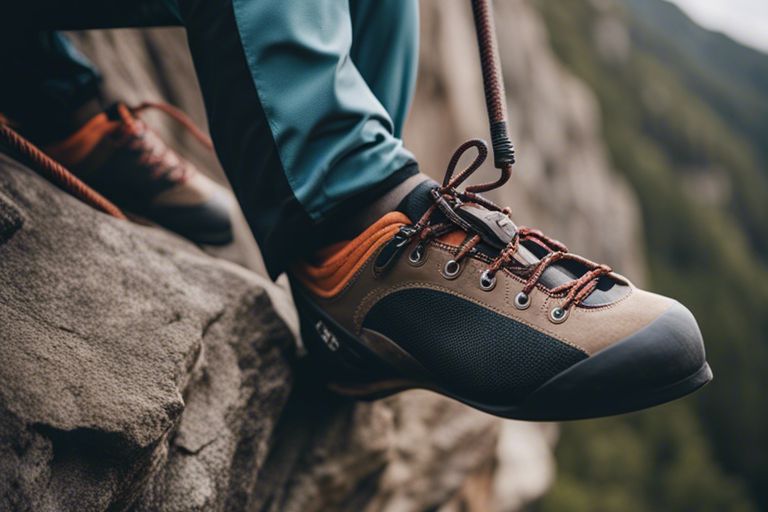Over the years, you’ve likely encountered quickdraws if you’ve ventured into the world of climbing. These imperative pieces of gear serve a crucial role in your safety and efficiency on the rock. Quickdraws connect your climbing rope to protection gear, allowing you to move securely and fluidly while ascending. Understanding their function and uses is imperative for any climber looking to enhance their skills and knowledge. In this post, we’ll explore what quickdraws are, how they work, and why they are a must-have in your climbing arsenal.
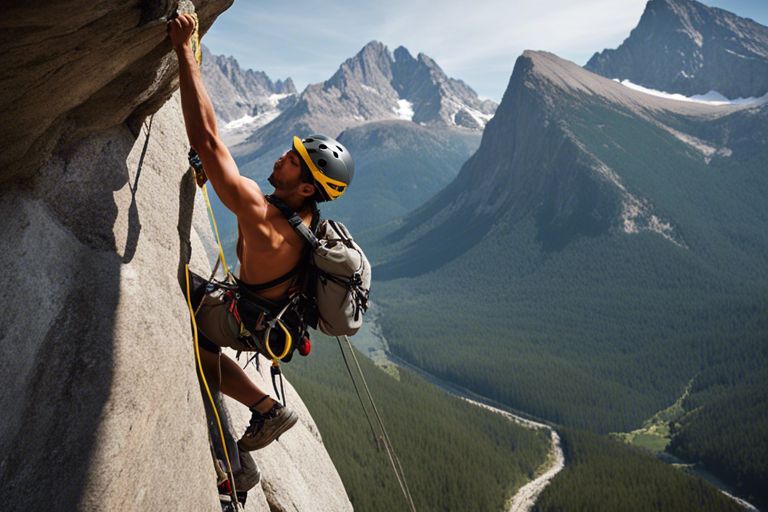
Key Takeaways:
- Climbing Protection: Quickdraws are imperative for securing a rope to an anchor point while rock climbing, providing safety and stability during ascents.
- Connector Functionality: They consist of two locking carabiners connected by a durable webbing, allowing for easy attachment and detachment of climbing gear.
- Versatility: Quickdraws can be used in various climbing scenarios, such as sport climbing, trad climbing, and multi-pitch routes, making them a fundamental piece of climbing equipment.
Understanding Quickdraws
Your journey into the world of climbing can be significantly enhanced by understanding the role of quickdraws. Quickdraws are imperative pieces of gear that allow you to safely connect your climbing rope to fixed protection, such as bolts or trad gear, while also facilitating smooth rope movement as you ascend. They are not just simple clips; their design and function play a crucial part in ensuring your safety and efficiency while climbing.
Definition and Function
One of the primary functions of a quickdraw is to reduce potential rope drag when moving upward on a climbing route. This is achieved by providing a flexible link between your rope and the protection that you have placed or that is already installed on the climbing route. Without quickdraws, your rope would create a straight line to the anchor, leading to significant friction and making the climb more challenging and potentially dangerous.
Additionally, quickdraws allow you to clip into gear quickly and securely, which is vital for maintaining your rhythm and focus while climbing. They come in various sizes and styles, catering to different climbing preferences and environments. Understanding how these components function together is imperative for any climber looking to improve their skills.
Components of a Quickdraw
With a typical quickdraw, you will find two key components: two carabiners connected by a sewn sling. The carabiners are usually of different types; one is typically a locking carabiner that attaches to your harness and the other is a non-locking carabiner for clipping to the anchor. The sling acts as a stabilizing link that keeps the carabiners spaced apart, which is critical for managing the dynamics of a fall.
Quickdraws are designed with materials that provide both strength and durability while being lightweight for ease of handling. The type of carabiner used can affect the overall weight of your setup, which is particularly important for long routes and alpine climbs where every ounce counts. You should always check the strength rating of each component to ensure that it meets safety standards.
Types of Quickdraws
One of the first steps in understanding quickdraws is knowing the different types available to climbers. There are generally several varieties of quickdraws that cater to different climbing styles and environments, including sport climbing, trad climbing, and alpine climbing. Each type is designed with specific features to enhance utility and safety.
- Sport Quickdraws: Lightweight and streamlined, ideal for clipping into bolts.
- Trad Quickdraws: Often longer and stronger, designed for use with various traditional protection types.
- Alpine Quickdraws: Typically feature a combination of both styles and are built to withstand harsher conditions.
- Wire Gate Quickdraws: Use wire gates instead of solid ones to minimize weight and prevent accidental un-clipping.
- Locking Quickdraws: Feature locking mechanisms for added security during use.
Knowing which type of quickdraw to use for a specific climbing scenario can greatly enhance your performance and safety. As you investigate deeper into climbing, you will progress in your ability to choose the best quickdraws that suit your climbing style.
To sum it up, understanding the types of quickdraws available to you can be imperative for your climbing endeavors. Here’s a quick breakdown for your reference:
| Type | Description |
| Sport Quickdraw | Designed for clipping into bolts; lightweight. |
| Trad Quickdraw | Stronger, longer; compatible with various traditional placements. |
| Alpine Quickdraw | Versatile in nature; built for extreme weather. |
| Wire Gate Quickdraw | Minimizes weight and prevents un-clipping. |
| Locking Quickdraw | Incorporates locking mechanisms for improved safety. |
Understanding these different types of quickdraws will help you make informed choices while climbing, ensuring you are adequately equipped for the challenges ahead. As your climbing journey progresses, being familiar with each type’s functionality can directly impact your experience and safety while vertically navigating your favorite routes.
The Role of Quickdraws in Climbing
After understanding the basics of climbing gear, it’s necessary to investigate the specific role of quickdraws. These versatile pieces of equipment serve multiple functions across various climbing disciplines. They not only facilitate a climber’s connection to protection points but also play a critical role in ensuring safety, efficiency, and comfort during ascents. By knowing how to effectively use quickdraws, you can significantly enhance your climbing experience and minimize risks associated with the sport.
Protection in Sport Climbing
Climbing primarily falls into two categories: sport climbing and traditional (trad) climbing. In sport climbing, quickdraws are used to connect the climber’s rope to pre-placed protection bolts along the route. By clipping your rope into a quickdraw, you create a secure path that allows you to fall safely if you lose your footing or grip. This connection is vital, as your safety depends on the integrity of the quickdraw and how it’s positioned. Properly placing quickdraws—ensuring that they are oriented correctly and free from twists—is critical to preventing a potential lifeline failure during climbs.
The beauty of using quickdraws in sport climbing lies in their efficiency. They allow you to move quickly from one point to another, saving you precious energy during challenging routes. By streamlining your gear and utilizing quickdraws, you can maintain focus on your climbing technique and problem-solving, rather than getting bogged down with obstacles or complications in your safety setup.
Importance in Trad Climbing
Sport climbing is characterized by its reliance on fixed gear, while trad climbing requires a different approach. Traditional climbing emphasizes the placement of movable gear, such as nuts and camming devices, which secure your rope to rock features. Quickdraws have a valuable role here as well, allowing you to connect your rope to the protection you place during your climb. Depending on how you choose to route your climb, quickdraws can adapt and work seamlessly with the equipment and placements you have made.
Another significant aspect of quickdraws in trad climbing is their weight and versatility. Since you may need to carry various types of gear for different placements, having a lightweight and adaptable quickdraw complements your overall climbing strategy. They facilitate quick linking to your gear, making it easier to maneuver around tighter spaces and more complicated routes as you ascend. You’ll appreciate the blend of functionality and convenience they provide during your climbs.
Quickdraws in Bouldering Scenarios
Climbing is often viewed through the lens of roped disciplines, but quickdraws also have a place in bouldering scenarios. Although bouldering typically involves climbing shorter routes without rope protection, they can still be useful in some contexts. For instance, quickdraws can help set up crash pads or serve as anchors for some highball bouldering problems, providing peace of mind when tackling more challenging moves and ensuring a secure landing.
Quickdraws, even indirectly, allow you to enhance your bouldering experience by keeping your focus on the climb itself. Whether you’re establishing an anchor for a workout or simply securing your gear for quick access, they offer flexibility that can make your session smoother and more enjoyable. Utilizing quickdraws in the right scenarios can improve your overall climbing efficiency and safety across different disciplines.
Proper Usage Techniques
For effective climbing, knowing how to properly use quickdraws is important. Quickdraws serve as the connection between your climbing rope and the protection points on the route, so understanding how to use them correctly can make a significant difference in safety and efficiency. Proper usage techniques include ensuring they can handle the load and are placed in a manner that minimizes the risk of cross-loading and back-clipping, both of which can lead to dangerous situations during a climb. Regular checks and double-checks of your quickdraw placements will help keep you safe and give you confidence while you climb.
Attaching Quickdraws to Belays
For attaching quickdraws to belays, it’s crucial that you do so in a systematic and secure manner. Start by reviewing your belay setup to ensure all components are correctly aligned and locked in place. When you attach each quickdraw, ensure that the carabiner gates are facing away from the rock face to prevent any accidental openings that could compromise your safety. This small detail can go a long way in providing you with peace of mind while you focus on your climb.
Clipping Technique Best Practices
Usage of proper clipping techniques can help improve your climbing efficiency and safety. When you clip the quickdraws, aim for a smooth and fluid motion, ensuring that your rope feeds easily through the carabiner without excessive force. If you can maintain a clean and efficient clipping style, you will minimize rope drag, avoid unnecessary stress on the gear, and ultimately enhance your climbing experience. The more you practice this technique, the more automatic it will become, allowing you to focus on the climb itself.
Technique plays a significant role in your climbing performance. You should practice clipping from a stable position to avoid awkward movements or losing balance. Additionally, it’s best practice to clip the rope while your feet are positioned securely on the holds, which helps reduce the risk of a fall, especially if you’re mid-route. Additionally, ensuring that the quickdraws are oriented properly will further streamline the clipping process and enhance your overall climbing efficiency.
Avoiding Common Mistakes
Practices for avoiding common mistakes with quickdraws involve being mindful of your actions and knowing the right techniques. Some climbers inadvertently cross-load their quickdraws, which weakens the carabiner and can compromise safety. Always ensure that the spine of the quickdraw is loaded in line with the direction of the force. Cross-loading can occur unconsciously during a climb, so maintaining awareness of your clip positions is key to preventing accidents.
Belays are another area where quickdraw usage is imperative for safely securing your position. Not properly securing your quickdraws in the belay system could lead to horrendous consequences if a fall occurs. Always confirm that your quickdraws are set up to function as intended, and remember to lock the carabiners into place after clipping. Regularly practice and review your technique with a partner to ensure you avoid these common mistakes while climbing.
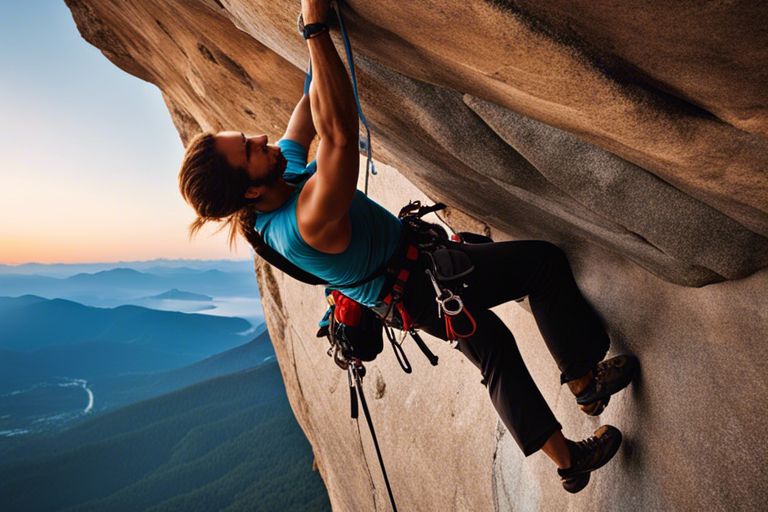
Safety Considerations
Despite the excitement and thrill that climbing brings, safety must always be your top priority. Understanding how to properly use quickdraws—and what to look out for—can significantly reduce the risk of accidents on your climbs. This section addresses some crucial safety considerations, including load limits and ratings, the importance of regular inspection and maintenance, and the differences between dynamic and static forces in climbing scenarios.
Load Limits and Ratings
On your climbing adventures, it’s crucial to remain aware of the load limits and ratings associated with your quickdraws. Quickdraws come with specific weight ratings, typically determined by the manufacturer, indicating the maximum force they can safely bear. Familiarize yourself with these ratings to ensure you select the appropriate gear for the type of climbs you intend to undertake. Remember that different climbing disciplines may impose varying demands on your equipment, so understanding the load limits helps keep you safe.
Additionally, keep in mind that the rated strength of quickdraws can be affected by various factors, including wear and tear, exposure to environmental conditions, and improper use. Always adhere to safety guidelines, and replace any gear that shows signs of excessive wear or damage, as this can compromise performance and your overall safety during climbs.
Inspection and Maintenance
On a regular basis before you head out to climb, you should inspect your quickdraws as part of your routine safety checks. Thoroughly examine the carabiners and webbing for any signs of wear, such as scratches, dents, or discoloration. Pay special attention to the gate mechanisms, ensuring they open and close smoothly without any sticking. Squint for any frayed or damaged webbing, as this can jeopardize the integrity of the quickdraw during use.
The maintenance of your quickdraws is just as crucial as the initial inspection. After each use, particularly in harsh environments, washing your gear with mild soap and water can help prevent dirt and debris from causing damage. Furthermore, storing your quickdraws properly—away from direct sunlight and extreme temperatures—will prolong their lifespan and ensure they are always ready for your next climbing adventure.
The lifespan of your quickdraws can vary based on usage frequency, environmental conditions, and overall care. Regularly check manufacturer guidelines on when it’s time to retire your gear, as this can help you stay safe on the wall. If you’re ever uncertain about the condition of your quickdraws, err on the side of caution and consider replacing them to maintain a high standard of safety.
Understanding Dynamic vs. Static Forces
An important aspect of using quickdraws is understanding the difference between dynamic and static forces that can occur during climbing. When a climber falls, the force exerted on their gear is typically dynamic, meaning it can create sudden loads that exceed the rated strength of your quickdraws. This is why properly placed protection and quickdraws designed to handle these dynamic forces are crucial for ensuring your safety during unexpected situations.
Contrastingly, static forces are typically encountered when a climber is suspended or resting on the rope. While quickdraws are built to withstand these forces, it’s crucial to realize the potential for increased stresses when falling. Understanding both types of forces can guide you in making informed choices when selecting your climbing gear and help you maintain safety throughout your climbing experiences.
Forces exerted on your quickdraws don’t just stem from falls but can also accumulate during long climbs, especially when you’re hanging in your harness. When you know how dynamic and static forces work, you can better appreciate the importance of using quickdraws rated for both types of loads. This understanding enables you to climb with confidence, knowing your gear can withstand the various forces at play. Always prioritize safety, and make informed decisions about the equipment you choose for your climbing endeavors.
Selecting the Right Quickdraw
All climbers understand that choosing the right quickdraw is pivotal for their safety and performance on the rock. As you venture into the world of climbing, it’s crucial to know how to select quickdraws that best meet your needs. Various factors can influence your choice, from the type of climbing you do to personal preferences in handling gear. Familiarizing yourself with these elements will ensure you are well-equipped for your next climbing adventure.
Factors to Consider
Consider the specific demands of your climbing style when selecting quickdraws. There are several key aspects to keep in mind as you evaluate your options:
- Length – Longer quickdraws may be preferred for routes with significant spacing, while shorter ones might suit sport climbing in tighter configurations.
- Weight – Lightweight options can reduce the total burden on your harness, enhancing your stamina on long multi-pitch climbs.
- Gate Style – Different gate mechanisms can affect your ease of clipping and unclipping, especially when strains are high.
- Strength Rating – Ensure that the quickdraw meets strength standards for your climbing type.
- Material – Aluminum tends to be lighter, while steel offers durability for specific applications.
Thou must carefully evaluate these factors to optimize your climbing experience.
Popular Brands and Models
Models of quickdraws vary significantly across brands, each offering unique features to accommodate the needs of different climbers. Some climbers lean towards brands like Black Diamond, Petzl, and Wild Country, known for their reliability and performance. Within these brands, you will find an array of models designed for sport, trad, and alpine climbing, each one tailored to excel in its intended environment.
A detailed exploration of these brands unveils various models such as Black Diamond’s FreeWire, Petzl’s Spirit, and Wild Country’s Helium, each with specialized characteristics. While some prioritize lightweight designs, others enhance strength without compromising usability. Investigating the specifications and features of these models can help you make informed decisions based on your climbing preferences.
Personal Preferences Among Climbers
The personal preferences of climbers significantly affect the selection of quickdraws. Factors such as hand size, clipping technique, and individual experiences can greatly influence which quickdraw feels most comfortable and functional for you. Acknowledging your own preferences enables you to confidently choose gear that performs up to your expectations while minimizing complications on challenging climbs.
Personal experiences can vary widely amongst climbers, leading to differing opinions on the ‘best’ quickdraw. This often results in climbers forming loyal attachments to specific brands or models based on comfort, reliability, and past performance on routes. Ultimately, finding the right quickdraw for your climbing style hinges on synthesizing personal experiences with the technical specifications that each option offers.
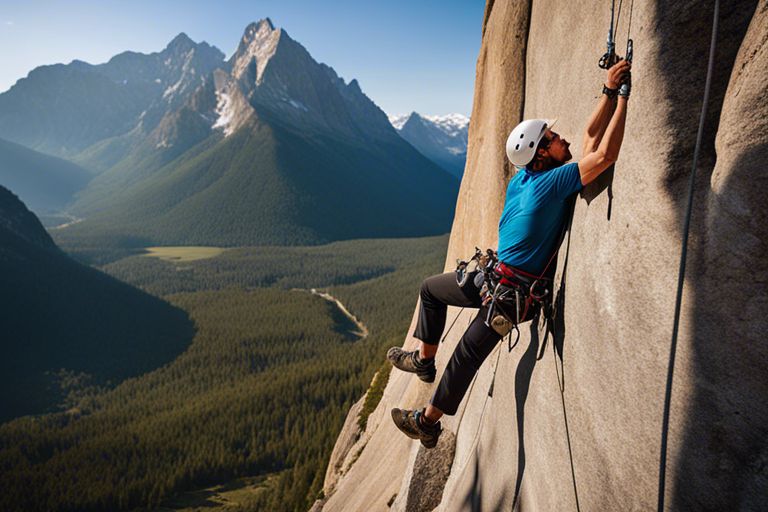
Quickdraws for Specific Climbing Styles
Once again, the versatility of quickdraws comes into play when considering specific climbing styles. Depending on the type of climbing you are engaging in, the way you use quickdraws can vary significantly. Understanding how to adapt your use of this imperative piece of gear to your specific climbing style can enhance your overall experience and safety on the rock.
Sport Climbing
One of the primary uses of quickdraws is in sport climbing. Here, you will find routes that are equipped with fixed protection points, making it imperative for you to clip your rope into these anchors using quickdraws. The quickdraws facilitate a smooth flow as you climb, allowing you to move efficiently from one bolt to the next without the added drag that could impede your progress. The length and the type of quickdraw you choose can also affect your climbing technique, so be sure to select options that suit your needs.
In sport climbing, the quickdraw’s carabiners might come in different shapes and gate types, impacting how easily you can clip them while maintaining your movement. You should consider using lightweight options to reduce your overall load, especially if you’re tackling longer routes. It’s also beneficial to familiarize yourself with the various quickdraw styles, as some may offer features like keylock noses, which prevent snagging on your harness or rope.
Trad Climbing
Any climber entering the world of traditional (trad) climbing will find quickdraws to be an imperative part of their gear setup. Unlike sport climbing, where routes are largely fixed with bolted anchors, trad climbing involves placing your own protective gear, such as cams and nuts, into natural features in the rock. Its versatility means you can use quickdraws to connect your rope to these placements and provide a secure pathway to the top, making it imperative to choose high-quality materials to ensure your safety.
In trad climbing, you might opt for shorter or longer quickdraws based on the placement of your gear and the route’s characteristics. Since you’ll often be using a mix of different types of protection, having a selection of quickdraws with various lengths can enhance your climbing experience. Always consider the weight and strength of your quickdraws, as this will directly impact your overall setup in trad conditions.
A key thing to note about trad climbing is that you should ideally use quickdraws with a locking carabiner at one end. This feature provides an added layer of security, ensuring that your gear remains securely in place as you ascend. When placing pro, you may encounter some tricky spots where space is limited; therefore, having the right quickdraw can make a significant difference in your ability to protect your climb effectively.
Alpine and Ice Climbing
For those venturing into alpine and ice climbing, quickdraws play a crucial role in connecting your rope to both fixed gear and your ice protection. In these environments, where conditions can change rapidly, the ability to quickly and safely clip your rope into anchors is imperative. The quickdraws you opt for in alpine and ice climbing should be robust and reliable to withstand harsher climates and heavier loads. It is also advisable to use quickdraws with wider gates to accommodate gloves and be sure to check for proper clearance when clipping into your gear.
To adapt your quickdraw usage in alpine and ice climbing, consider using longer quickdraws for ice screws, which might be placed deeper within the ice to ensure a secure connection. Understanding the configurations, such as the importance of reducing rope drag when traversing across glaciers or steep ice faces, will greatly enhance your overall climbing experience. The proper selection and usage of quickdraws in these environments can ensure your safety while navigating complex climbing terrains.
Maintenance and Care
Keep your quickdraws in optimal condition to ensure safety and performance during your climbing adventures. Regular maintenance and care will not only extend their lifespan but also keep you secure while on the rock face. Remember that the more you care for your gear, the more reliable it will be when you need it the most.
Cleaning Quickdraws
To maintain the integrity of your quickdraws, it’s important to keep them clean, especially after using them in dusty or sandy environments. Cleaning can be as simple as rinsing the gear with water to remove debris, dirt, or salt from seaside climbs. Be sure to use mild soap if necessary, but avoid any aggressive detergents that could weaken the material.
After rinsing, allow your quickdraws to dry completely before storing them. This is crucial to prevent rust from developing on metal parts and to avoid mildew on webbing. Always check the nylon slings and any elastic components while cleaning to ensure they remain free of frays or wear.
Storing Quickdraws Properly
Any time you finish climbing, take a moment to store your quickdraws properly. Storing them in a dry, cool place will help maintain their condition and durability. Avoid leaving them exposed to direct sunlight for extended periods as UV exposure can weaken the materials. Consider using a gear bag or drawer to keep them organized and protected from environmental factors.
With proper storage techniques, you can reduce the likelihood of tangling and wear, making it easier to access your quickdraws when needed. Additionally, invest in a dedicated storage system that allows for ventilation, as moisture can accumulate in enclosed spaces, leading to potential rusting and damage.
When to Replace Quickdraws
The longevity of your quickdraws depends on many factors, including frequency of use, the type of climbing you do, and environmental exposure. Regularly inspect your quickdraws for signs of wear, such as fraying, discoloration, or bent carabiners. If you notice significant damage, it’s time to think about replacing them. Using damaged gear can seriously jeopardize your safety on routes.
A good rule of thumb is to replace your quickdraws every few years, depending on how often you climb and the conditions they’ve been subject to. If quickdraws have been involved in a significant fall or if you’re unsure of their integrity, it’s always better to err on the side of caution and get a new set. You can never be too careful when it comes to your climbing safety.
Summing Up
With these considerations, it’s clear that quickdraws play a vital role in your climbing experience, providing safety and efficiency when you’re scaling rock faces. Whether you’re sport climbing, trad climbing, or even setting up a top-rope, these crucial pieces of gear help you manage rope tension and reduce the risk of falls. By understanding how to select the right quickdraw for your needs and knowing how to properly connect it to your harness and climbing gear, you can significantly enhance your climbing performance and safety.
Furthermore, the choice of quickdraws affects not only your climbing efficiency but also your overall confidence on the wall. High-quality quickdraws offer durability and strength, allowing you to focus on your movements rather than anxiety about gear failure. So, as you continue to explore the sport of climbing, remember the importance of quickdraws in your rack, and ensure that you are using the right tools to help you reach new heights safely.
Q: What are quickdraws and why are they important in climbing?
A: Quickdraws are crucial climbing gear used to connect the climber’s rope to protection points, such as bolts or gear placements. They consist of two carabiners connected by a durable sewn sling. Quickdraws are important because they allow for safe and efficient climbing by minimizing rope drag, providing a secure anchor point, and enabling the climber to move freely and safely along their route. Having the right number and type of quickdraws can significantly enhance the climbing experience.
Q: How do I choose the right quickdraws for my climbing needs?
A: When opting for quickdraws, consider factors such as the type of climbing you plan to do (sport, trad, or multipitch), the weight and strength of the quickdraws, and the length of the slings. For sport climbing, lighter quickdraws with shorter slings are often preferred for ease of handling and reduced weight. For trad climbing, longer slings can help reduce rope drag on traverses. Also, look for quickdraws with a sturdy gate design, such as a keylock nose, to prevent snagging during clipping and unclipping.
Q: How many quickdraws do I need for a climbing route?
A: The number of quickdraws you’ll need varies based on the length and style of the climbing route, as well as how closely spaced the protection points are. As a general guideline, most sport routes will require about one quickdraw for every 10-15 feet of climbing, but this can vary widely. It’s always a good idea to carry extra quickdraws than you think you’ll need to ensure you can manage unexpected situations or route changes effectively. Being prepared will enhance your safety and enjoyment while climbing.

